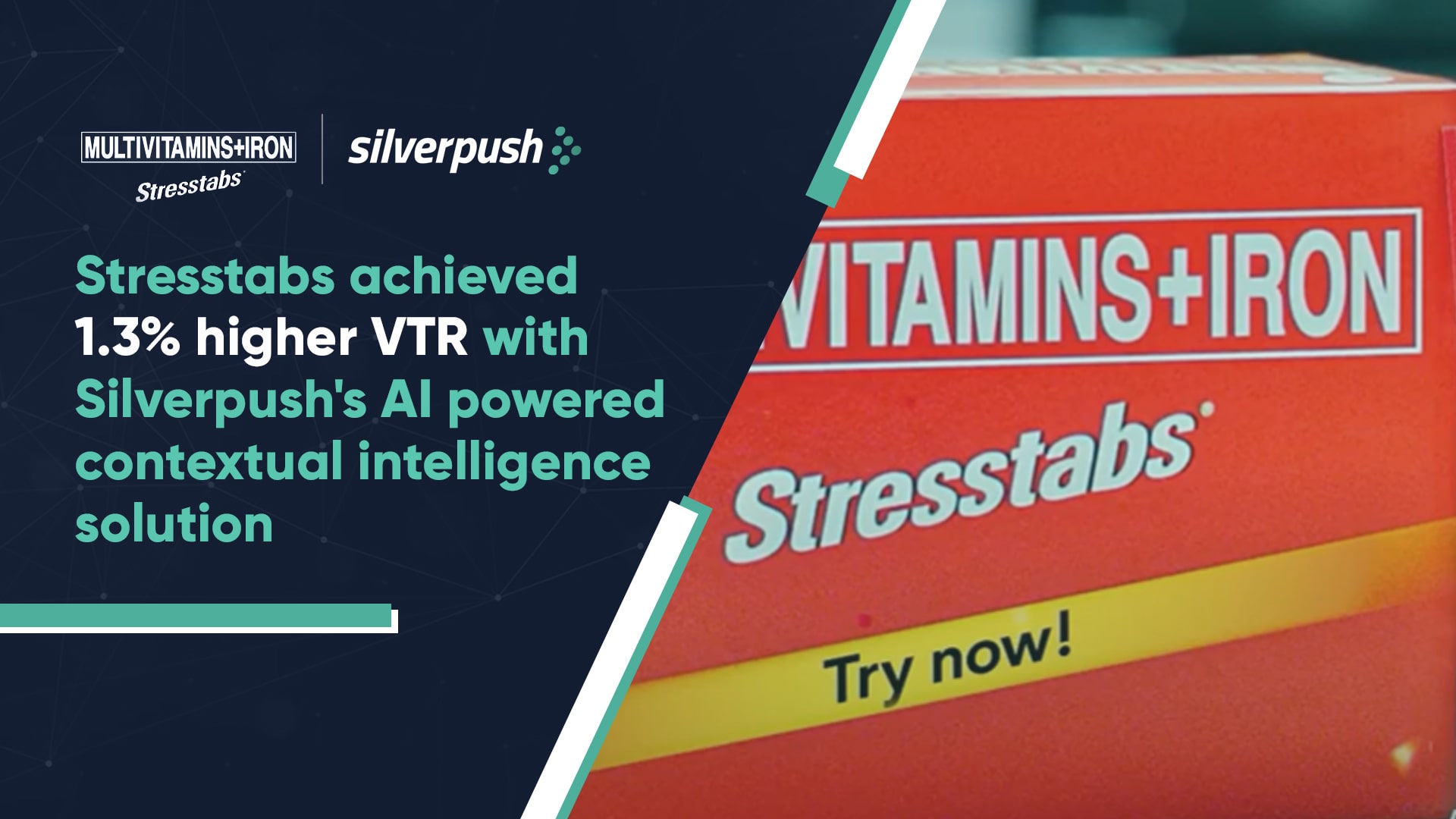Safe and Sound: Building a Fortified Online Presence for Your Brand
PUBLISH DATE: 26 December 2023
In the digital age, where a brand’s reputation is built and broken online, brand safety has emerged as a critical business imperative. It goes beyond simply avoiding harmful content; it’s about strategically managing your brand’s online presence and ensuring it appears in environments that are aligned with your values, resonate with your target audience, and ultimately contribute to your overall business goals.
What is Brand Safety?
In essence, brand safety encompasses a set of measures, guidelines, and practices to ensure that a brand’s advertising does not appear in contexts that could potentially harm its image. This is especially crucial in the world of digital advertising, where programmatic placements might lead to ads appearing alongside off-brand, offensive, or controversial content.
Brand safety is a paramount concern for advertisers today, focusing on safeguarding the reputation of their brands and preventing them from associating with negative environments. The Global Alliance for Responsible Media (GARM) has developed the GARM: Brand Safety Floor + Suitability Framework to aid brands in maintaining their reputation by avoiding harmful or inappropriate content.
Critical components of brand safety include:
- Contextual Relevance: Guaranteeing that ad content is not only appropriate but also relevant to the content of the webpage, video, or other media in which it is displayed.
- Quality of Placement: Ensuring that ads are featured on websites or media outlets that align with the brand’s values and quality standards.
- Content Exclusions: Employing negative keyword lists, blocklists, or other filtering tools to prevent ads from being displayed next to specific types of content.
- Compliance and Regulation: Ensuring that ad placements adhere to industry regulations, which may vary by country, encompassing guidelines on advertising for products like tobacco, alcohol, or pharmaceuticals.
- Audience Targeting: Confirming that ads are directed at a demographic that is not only suitable but also intended for the advertised product or service.
Why Does it Matter?
Imagine your brand’s carefully crafted ad appearing next to a controversial news article or an offensive video. The resulting damage to your brand image could be significant, leading to lost sales, customer churn, and a negative public perception.
A 2021 US survey revealed that 80% of respondents expressed concern about brands appearing alongside negative content online. This statistic underscores the importance of brand safety for businesses of all sizes, regardless of industry or target audience.
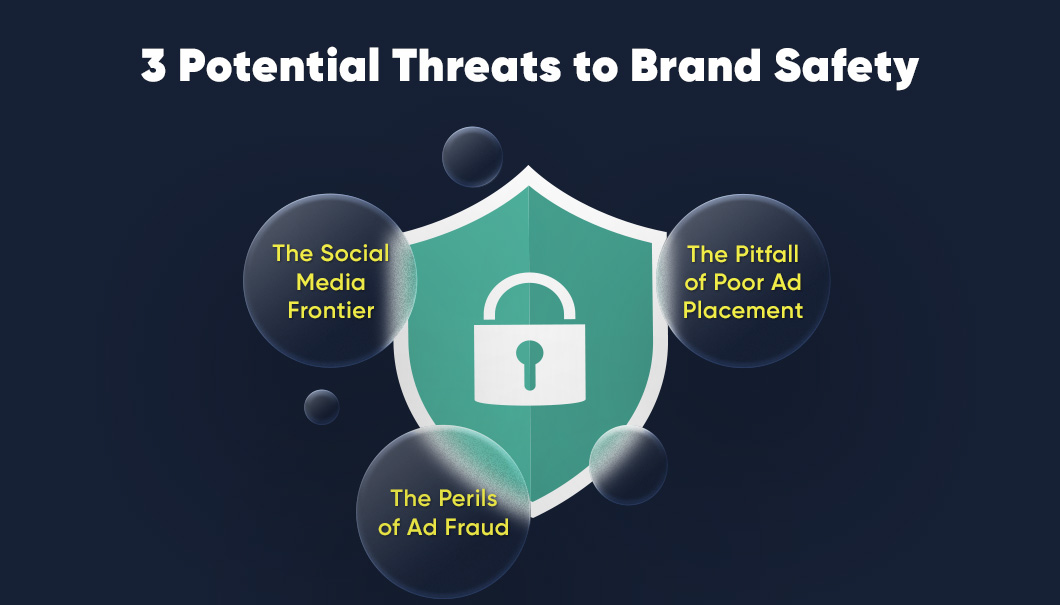
Several factors pose significant risks to brand safety in the ever-evolving digital landscape:
1. The Social Media Frontier: Over time, social media has become a globally acknowledged source of truth. A well-crafted social media presence plays a crucial role in establishing a brand’s identity. Individuals prefer staying informed and closely monitoring their favored brands on social platforms. However, the dual nature of social media poses both advantages and challenges.
While it serves as an excellent avenue for brand promotion and interaction with customers and enthusiasts, it also carries the risk of brand reputation damage if ads appear alongside objectionable content. This powerful tool’s accessibility has led to instances where internet users have criticized brands for inappropriate content, imagery, or placement next to questionable material or pages.
To ensure brand safety, meticulous attention is required in areas such as ad strategy, and monitoring mentions, comments, and appearances. Marketers must remain vigilant against impostors and identity thieves capable of causing significant harm through fraudulent activities or posting unsavory content.
2. The Perils of Ad Fraud: In an industry valued at over US$ 640 billion, fraudulent activities are inevitable. Dubious websites, often assisted by bots, generate false clicks and attract ads, leading to significant financial losses for advertisers every month. It is imperative for marketers to ascertain whether their ads genuinely reach the intended audience, exercise control over ad impressions, and measure the quality of impressions and clicks.
The impact on brand safety is notable, with adult websites being a major contributor to ad fraud. An esteemed brand’s ad appearing alongside adult content can severely damage its image. While keyword block lists are useful, they alone cannot guarantee brand safety, and the practice may have unintended consequences.
3. The Pitfall of Poor Ad Placement: Ad placements are not just about reaching a large audience; they are about ensuring your brand appears in the right context. Placing ads on websites that are inconsistent with your brand values or target audience can lead to negative associations and erode your brand image.
A common mistake among marketers and advertisers is the oversight of ad placement strategy. Reports have criticized YouTube for displaying ads from renowned brands alongside misinformation and conspiratorial content. Emphasizing the importance of ad placements is crucial, as they significantly impact a brand’s image.
Striking the Perfect Balance of Brand Safety with Contextual
Contextual targeting offers a powerful solution to the challenges of brand safety. This innovative technology utilizes artificial intelligence, including Natural Language Processing (NLP) and Sentiment Analysis, to understand the context of web pages and online environments. By analyzing the written and visual content, contextual targeting enables brands to place their ads on relevant websites with content that aligns with their brand values and resonates with their target audience.
Mirrors by Silverpush: Your Trusted Partner in Brand Safety

Mirrors by Silverpush is a cutting-edge contextual targeting platform designed to help brands achieve their goals while maintaining the highest levels of brand safety. Utilizing sophisticated AI algorithms and advanced language models, Mirrors analyzes the written and visual content of web pages, ensuring that your ads appear in safe and brand-aligned environments. With Mirrors, you can:
- Protect your brand reputation through intelligent ad placement.
- Reach your target audience with precision and relevance.
- Gain valuable insights into your audience’s behavior and preferences.
- Optimize your campaigns for maximum effectiveness and return on investment.
In conclusion, brand safety is no longer a luxury; it’s a necessity for businesses operating in the digital world. Innovative solutions like contextual targeting and partnering with trusted solutions like Mirrors, brands can ensure their reputation is safeguarded, their advertising efforts are effective, and their overall business objectives are achieved.
Study Reveals 40% of Marketers Anticipate Rise in Brand Safety Concerns
PUBLISH DATE: 20 February 2023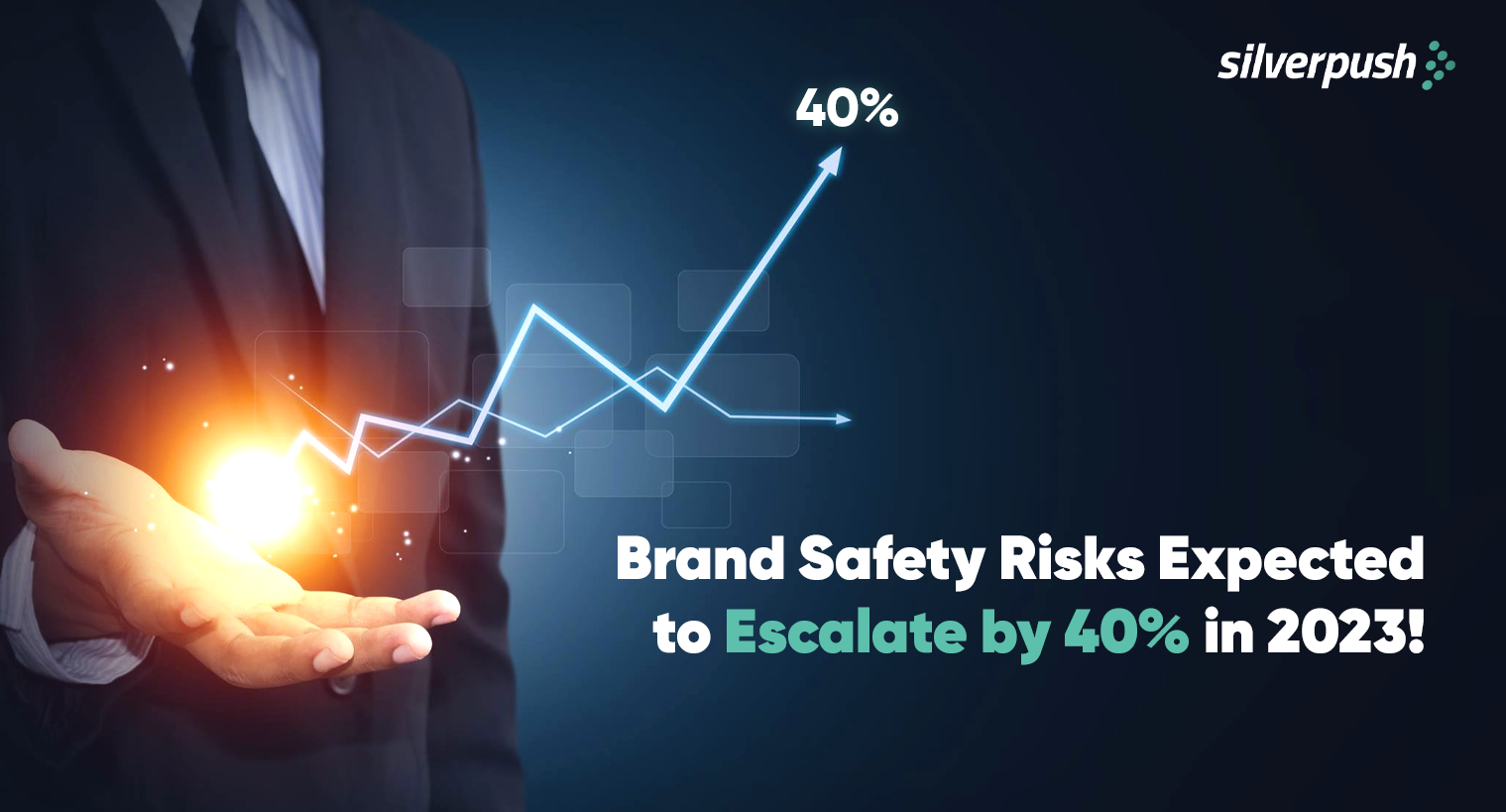
Mediaocean, a major multi-channel advertising platform, has recently published its 2022 Market Report and 2023 Forecast report, which highlights the ongoing worries about the safety and appropriateness of media environments.
According to the report, more than half of those surveyed anticipate their brand safety concerns to remain the same in the coming year, while almost 40% expect these worries to rise in 2023. Only a small percentage of respondents expect these concerns to diminish.
Brands have become increasingly worried about brand safety, with 75% of them experiencing a brand safety incident within the last year.
As the concerns about brand safety continue to rise, it raises the question of how brands can address these concerns and ensure brand safety and suitability on platforms such as YouTube, social media, and the Open Web. Let’s find out!
What are the Key Considerations to Ensure Brand Safety?
It is a fundamental aspect of human behavior to make judgments about people based on their company, and the same applies to brands and products. Whether intentionally or subconsciously, consumers evaluate brands based on the content that they associate with. Therefore, brands must safeguard their online image by utilizing sophisticated hyper-contextual targeting solutions.
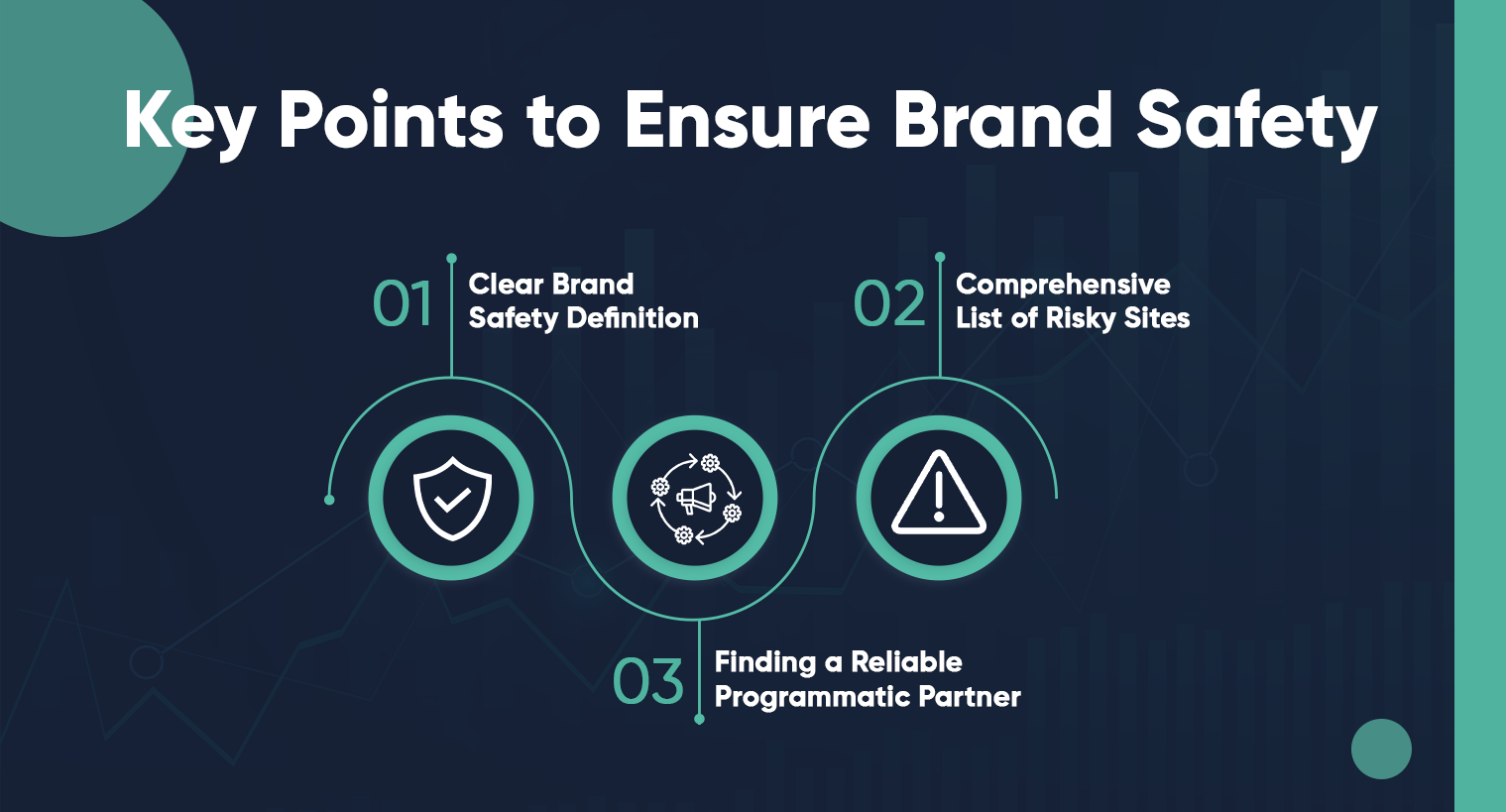
Here are four essential factors that brands should consider to safeguard their image:
1. Develop a Clear Definition of “Brand Safety”
To implement brand-safe advertising, it is crucial to establish a set of guidelines and parameters that everyone within the organization can agree on. It is important to craft a clear definition of what constitutes brand-safe content and what is considered risky or unsafe. Examining industry-standard definitions of brand safety can serve as a good starting point.
2. Create a Comprehensive Blocklist of Sites
A blocklist is a list of websites or content that you do not want your ads to be displayed alongside. It is also referred to as a negative targeting, exclusion list, or blacklist. Maintaining an updated document of blocklisted sites is essential to exclude any undesirable topic, content, or website that may be detrimental to your brand’s image. By doing so, you can ensure that your ads are only displayed on sites that align with your brand’s values and messaging.
3. Choose a Programmatic Partner that Prioritizes Brand Safety
Selecting the right programmatic partner is crucial to ensuring that your brand remains safe online. At Silverpush, our AI-powered contextual solutions are specifically designed to address brands’ concerns about online advertising without sacrificing reach.
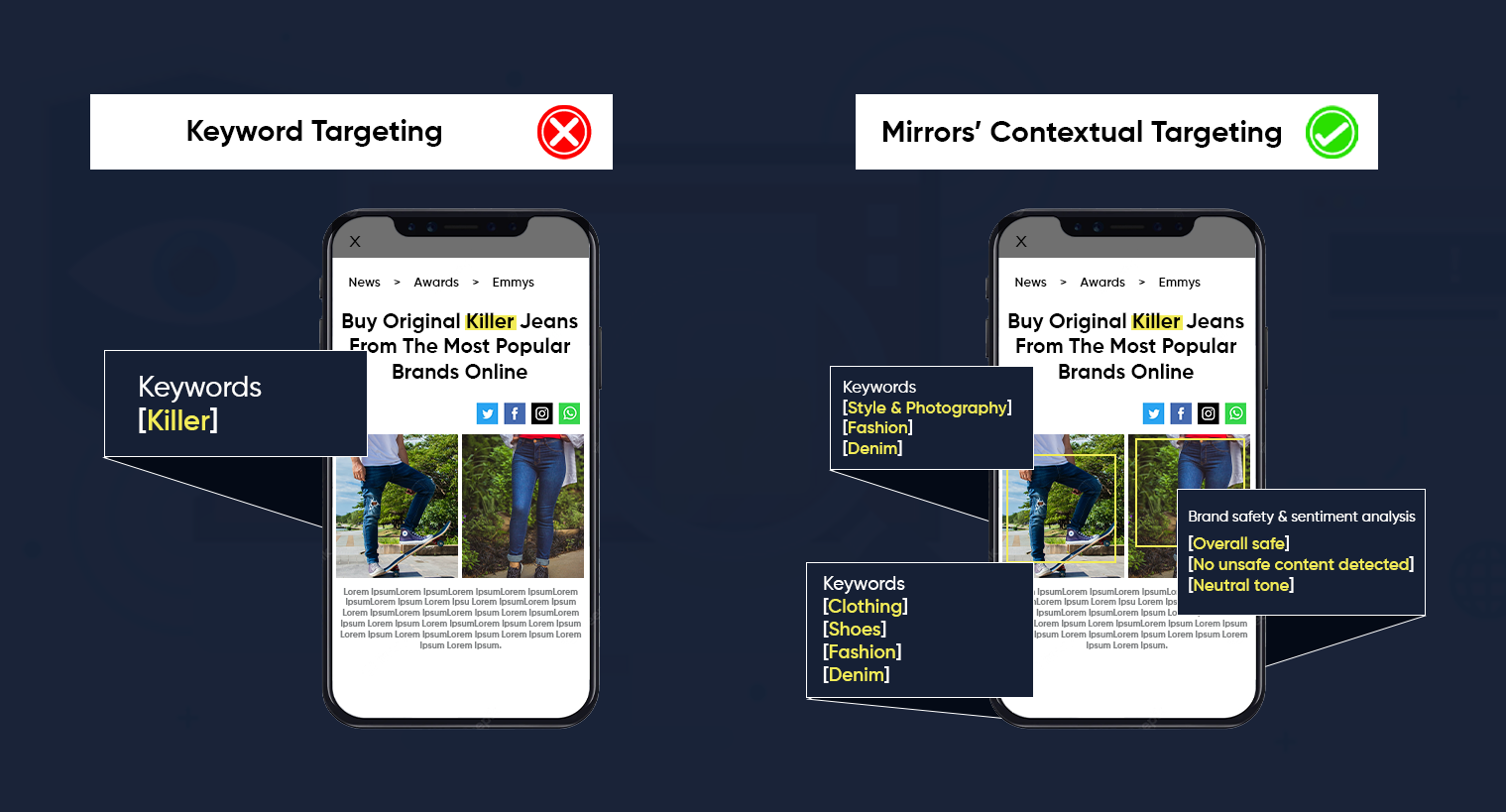
How does our brand safety strategy work?
Mirrors’ deeply trained proprietary AI models identifies custom-defined unsafe contexts in content to contextually filter content. These placements are classified into many levels of content, including smoking, adult, violence, wrecks, arms, terrorism, and others.
4. Monitor your Campaigns Closely
Digital advertising allows you to track your results in real time, enabling you to identify and address any brand safety concerns promptly. Keep a close eye on your campaigns to identify any potential bot traffic or fraudulent activity. If you spot any issues, make necessary adjustments to your campaign settings to safeguard your brand’s reputation. Monitoring your campaigns is crucial to ensuring that your ads are appearing in safe and suitable environments, which is essential to maintaining a positive brand image.
Why is Brand Safety Important in Advertising?
Brand safety in advertising is critical to maintaining a positive brand image and protecting brand equity. In a recent survey, 90% of consumers stated that they believe brands are responsible for ensuring that their ads appear alongside safe content.
Consumers view the content their favorite brands appear alongside as an implied endorsement of that content. Negative associations can damage a brand’s reputation and have long-term effects on its equity. Therefore, brands need to prioritize brand safety in advertising to ensure that their ads are only displayed in suitable environments that align with their values and messaging.
Here are a few pointers on why brand safety is important in advertising:
1. Establishing a Positive Brand Reputation
Maintaining a good brand reputation is essential for the success and long-term viability of a business. Consumers are more likely to interact with a brand when its ads appear next to legitimate and appropriate content. A study found that 61% of users believe that both the brand and the hosting platform share equal responsibility for keeping content safe. Failure to prioritize brand safety can result in consumers losing trust in the brand and stopping its use.
2. Making a Strong First Impression
For new or smaller brands, a single incident of their ads appearing next to fake news or offensive content can significantly damage their reputation and credibility. Even established brands may suffer losses in ad revenue and potential negative associations when their ads appear next to inappropriate content. Therefore, brands must prioritize brand safety in their advertising efforts and take proactive measures to ensure that their ads only appear next to suitable and reputable content.
Safeguard your Brand Image with Silverpush’s Hyper Contextual Solutions
In today’s digital landscape, brand safety is crucial for maintaining a positive brand image and avoiding potential reputational damage. Silverpush, one of the leading tech companies understands the importance of safeguarding your brand and has developed advanced contextual advertising solutions to help ensure brand safety and drive maximum ROI.
Our AI-powered Mirrors identifies key contexts and filter custom-defined unsafe contexts in streaming video, allowing us to classify videos into different levels of content safety. We also use text and sentiment analysis, engagement metrics, and organic influence to ensure brand suitability.
Partnering with a programmatic partner like Silverpush that prioritizes brand safety can help you maintain your brand’s reputation and build trust with your audience. Contact us today to learn more about how we can help you protect your brand image and achieve your business goals.


